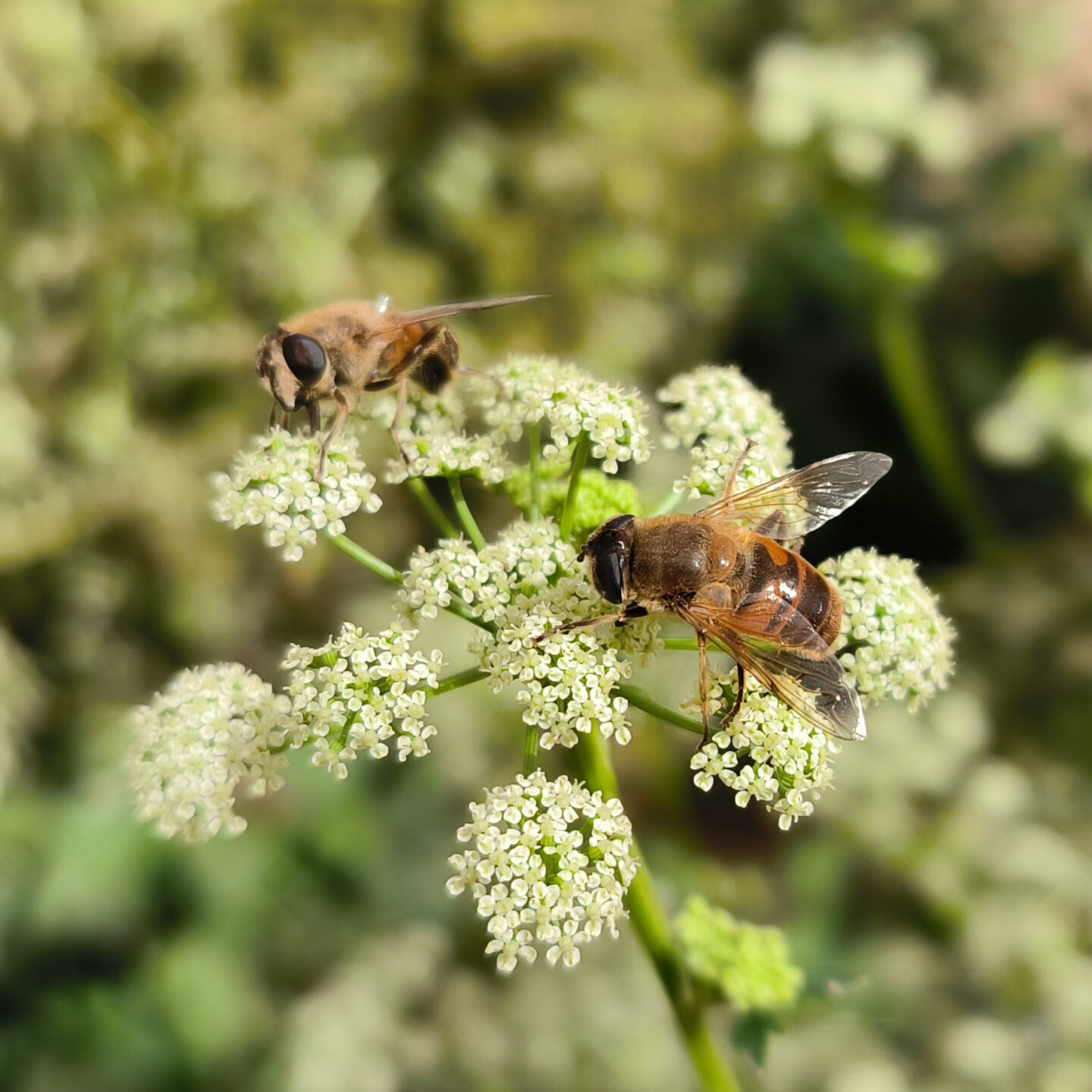How to use Polyfly hoverflies
At Polyfly, we supply our hoverflies QUEENFLY® (Eristalis tenax) and GOLDFLY® (Eristalinus aeneus) in pupa form, ready for release in the field.
Available formats include:
- XS: 50 or 100 pupae.
- S: 100 or 200 pupae.
- M: 500 or 1,000 pupae.
- L: 2,500 or 5,000 pupae.
- XL: 10,000 or 20,000 pupae.
All formats are delivered in recyclable cardboard boxes, ready to use.
Step-by-Step Instructions
1. Dose Calculation
The recommended quantity of hoverflies depends on the crop type and production environment (cages, tunnels, greenhouses, mesh-covered or open field). For a tailored pollination protocol, contact Polyfly directly.
2. Receiving and Handling Boxes
- Store boxes in a dry place, out of direct sunlight (especially in summer).
- Keep at moderate cold (8–12 °C) if not used immediately, for a maximum of 5 days.
3. Adult Emergence
Hoverflies emerge from pupae after a period depending on temperature:
- 5–10 days at 15 °C.
- 2–5 days at 25 °C.
Pollination activity begins 1 to 3 days after emergence.
4. Acclimatization (if needed)
Under extreme temperatures (below 10 °C or above 36 °C), acclimate pupae at ambient temperature (20–25 °C) for 2–3 days prior to release.
5. Field Release
Perform two main releases during a 4–5 week flowering period:
- First release: at the beginning of flowering.
- Second release: one week later or every 15 days, depending on crop development.
The goal is to synchronize peak flowering with peak adult hoverfly activity.
Recommendations and Precautions
- Protect boxes from irrigation, rain, and direct sunlight.
- Keep away from predators such as ants and birds (hanging the boxes is recommended).
- Provide food sources if floral resources are limited: cloth-wrapped feeders and sugar containers.
- Be cautious with pesticides: hoverflies are sensitive to them, just like bumblebees.
Compatibility with Other Pollinators
Polyfly hoverflies are fully compatible with:
- Honeybees.
- Bumblebees.
- Other natural pollinators.
- Beneficial insects.
They can be used alone or in combination to enhance overall pollination efficiency.
